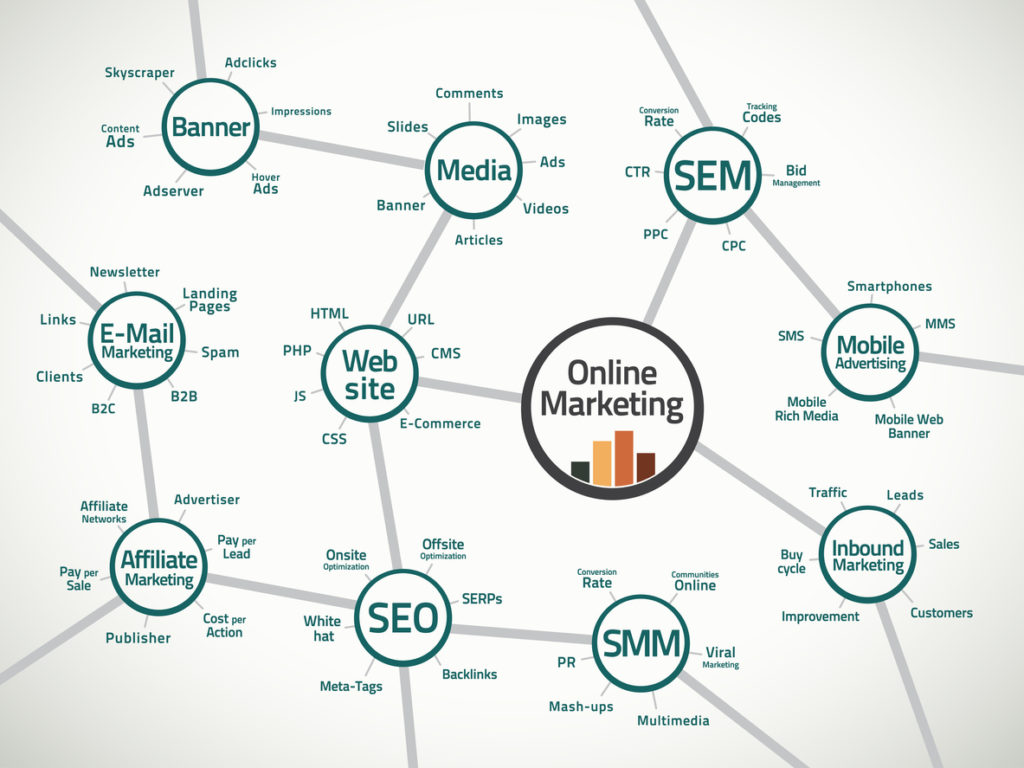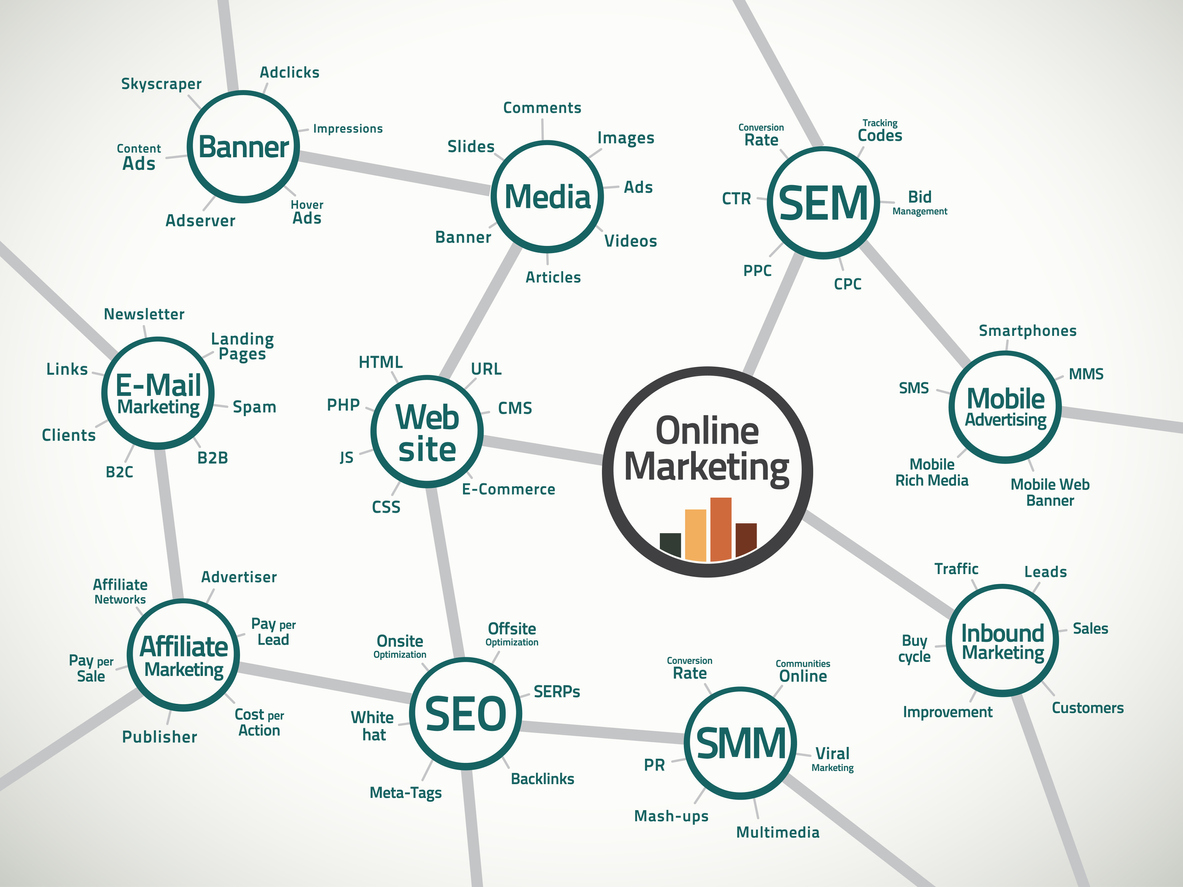The web is an ever-evolving environment, and it requires an adaptable approach to help make sure that your brand is visible, found by searchers and visited by users. It’s why we do a lot of tracking on metrics like CTR or suggest running a PPC campaign to drive visitors to your site through SEM.
If you just asked yourself “what does that mean?” – we can help.
Let’s take a closer look at some of the top terms you might see on a digital marketing report and help you make sense of what they mean.
SEO – Search Engine Optimization
SEO, or search engine optimization, is work done to improve your website’s positioning in search engine results. It’s well understood at this point that the pages ranked highest in a results page receive the most visits. In fact, if you’re not in the first four positions, you’re likely to see a less than 4 percent click through rate (CTR), according to Advanced Web Ranking’s data.
With an SEO campaign, your site is evaluated for content relevance, keyword usage, N-A-P information, technical data improvements, meta information and much more. All of these – and a slew of other factors both on your site and offsite – can impact how well you rank. An SEO specialist can work with you to identify the most relevant terms and work to increase your visibility. Or, in more lay terms, if your construction company is trying to draw users searching for “heavy equipment Idaho,” SEO works to get your site to appear at the top of results.
SEO is a long-term strategy that works to improve your rankings organically – that is without paid promotion. It’s not immediate – instead, it’s an ongoing effort, especially as the search engines introduce changes to their ranking algorithms regularly that impact how every site ranks. A good SEO strategy will be adaptive to adjust to these alterations on the fly to help keep your rank climbing or maintain your high position.
N-A-P – Name, Address and Phone
No, it’s not time for a quick siesta already – N-A-P is shorthand for name, address and phone, all of which are critical for local search results.
More and more people are searching for businesses from their mobile devices or voice assistants like Siri, Alexa or Echo, and these users are looking for results near them. Making sure your N-A-P details are accurate and consistent is important to making sure you can be found. Simple things – such as using “Street” versus “St.” in your address or using “Company” on your website versus “Co.” on your Facebook page – can lead to inconsistency and confusion between platforms, confusing search engines and making you more difficult to find.
The old adage “Consistency is key” applies here – making sure you keep your N-A-P information the same on every platform helps improve your visibility in search engines.
 SEM – Search Engine Marketing
SEM – Search Engine Marketing
A related concept to SEO, search engine marketing – or SEM – most often refers to paid advertising efforts that get your website to the top in search results. You’ve probably seen results at the top or bottom of a search results page that promote related businesses and websites to what you searched for. SEM is what gets them there.
SEM is a particularly effective short-term tool to help improve your visibility for terms that are difficult to rank for or competitive to your business. For instance, SEM can be used to target a competitor’s name so that you appear in the results when a user searches for a rival brand. SEM is also useful for promoting your business in a specific area for a hard-to-rank term, such as “shoes” or “sweaters” that would otherwise be highly competitive. For those who want more of the immediate gratification of instant results, SEM is the best option – but it comes with ongoing costs.
These campaigns rely on PPC – pay per click – and are measured through metrics like CTR and CPC. We’ll dive more into those terms below.
PPC – Pay Per Click
PPC isn’t a dated shorthand reference to Apple’s old PowerPC processor. Instead, it means pay per click, and is the most common method of running a paid digital campaign, whether it’s through Google Ads, display network or remarketing campaigns, or a social media promotion. Simply put, your ad runs on the selected network and you are billed for each click on your ad. You typically set a budget for the campaign and can optimize times, locations and other demographic details, and you are charged up to your budget maximum as the campaign runs.
Variations on this model are also common, depending on the network, the creative material and the type of campaign. For example, you may encounter PPV – pay per view – on a video network, or PPM – pay per thousand impressions, with the “M” standing for the Roman numeral for 1,000 – that charges by the number of times the ad appears as opposed to clicked. Different ad networks offer different approaches for presenting advertisements, so make sure you understand how ads are shown and billed to maximize the impact of your campaign.
CTR and CPC – Click Through Rate and Cost Per Click
Two top terms to watch for the performance of a digital campaign are the CTR and CPC. CTR is your click through rate and measures how many people click on a link to your page. This can be measured in terms of your SEO performance, SEM campaign or other types of digital advertising. The higher your CTR, the more people visit your site. It’s also a good indication that your material is relevant to the user and providing the answer or product they were looking for.
CPC, or cost per click, is the financial measure of those clicks. For SEM campaigns, this is the average cost for your ad to show per click, which can range dramatically based on a number of factors, including the relevance of your ad to the keyword, the quality of your landing page and actual ad creative, can all play a role in calculating your Quality Score, which impacts your ad costs. A higher Quality Score results in lower costs, so making sure to optimize your campaign to impact the factors listed can help you get more results for less cost.
Digital Marketing Is So Much More
All of these terms are just the tip of the proverbial iceberg, and there’s a lot more terms to know when it comes to digital marketing in Buffalo or anywhere around the world. We know the methods and techniques to improve your website visibility, traffic, visitors and conversions. Just like you know all the technical terms in your field, we know all the terms in ours, so trust JFG to help your business or organization find success online.
Looking for help for your construction business or want to improve the visibility of your medical practice or nonprofit organization? Let us take a look and offer some recommendations for your specific site. Get started by calling us today at 716.433.7688.


